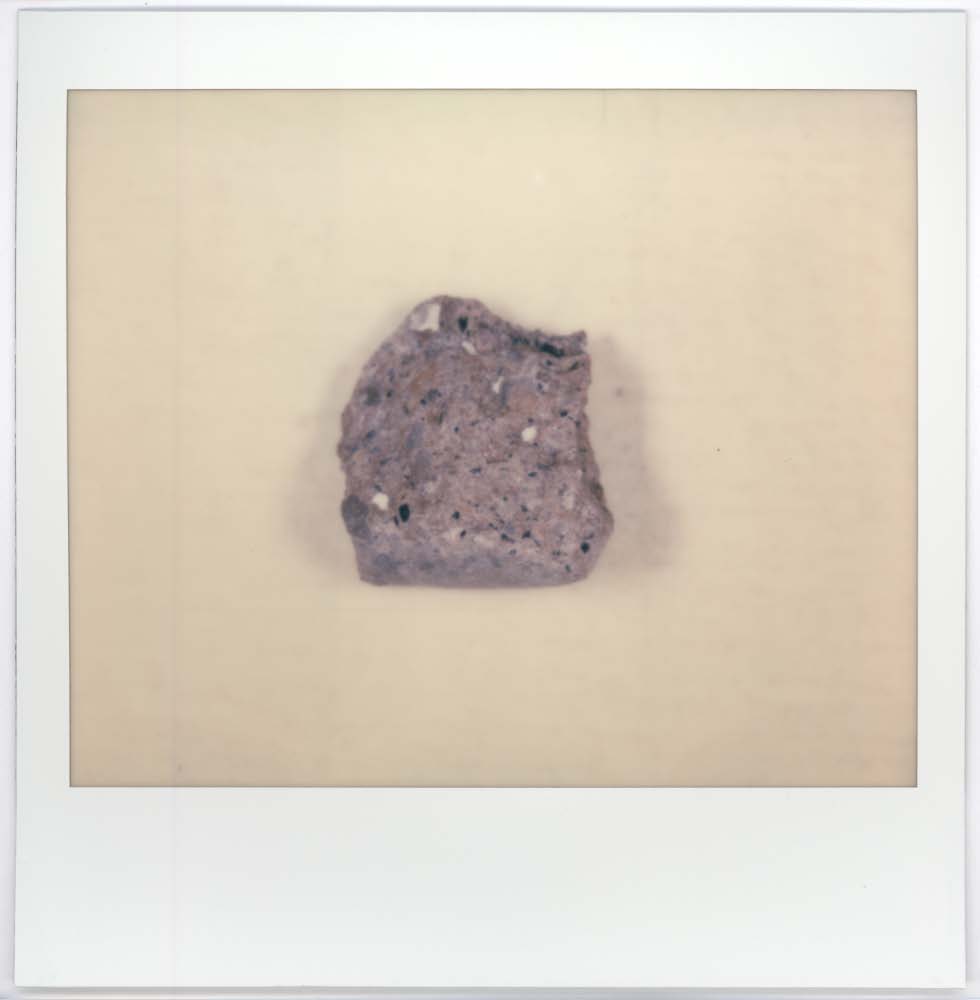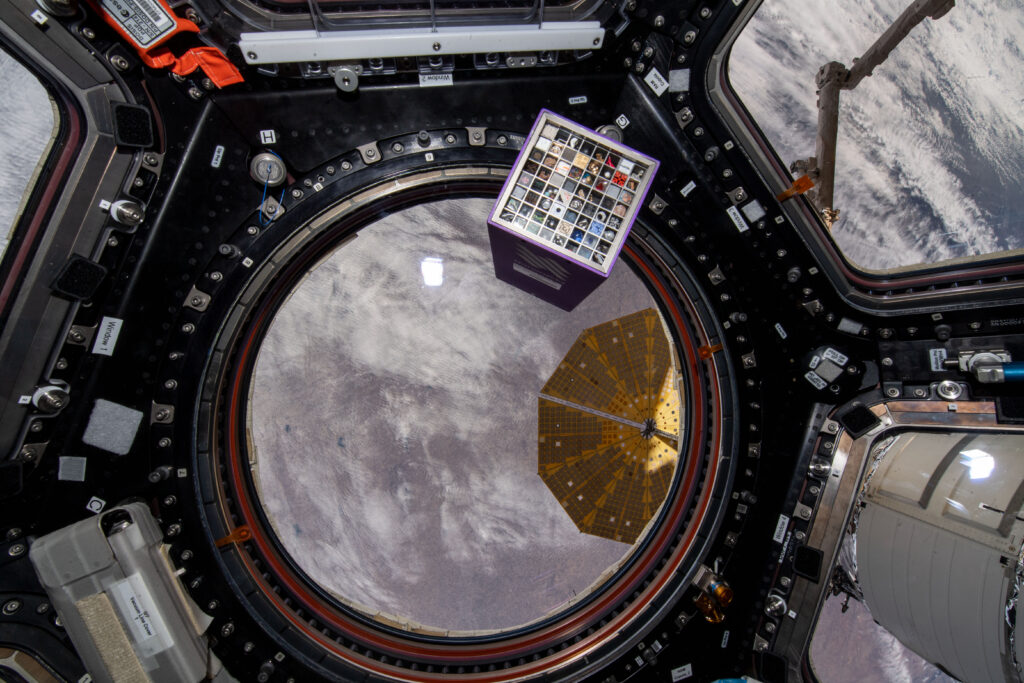
unique piece 1 of 2 + 1 AP
Fragment of mortar attributed to Aqua Tepula, photographed on the cover of The Building of the Roman Aqueducts (1934) by Esther Boise van Deman
102x103mm photo on direct developing colour film

unique piece 1 of 2 + 1 AP
Fragment of mortar attributed to Aqua Tepula, photographed on the cover of Livellazione degli antichi acquedotti romani (1917) by V. Reina, G. Corbellini and G. Ducci
102x103mm photo on direct developing colour film

unique piece 1 of 2 + 1 AP
Fragment of mortar attributed to Aqua Tepula, photographed on the cover of The Aqueducts of Ancient Rome (1935) by Thomas Ashby
102x103mm photo on direct developing colour film
Steps towards the first gallery on the moon
For years, I have looked at the moon as an abstract phenomenon, possibly like any culture on earth did for many centuries. But now humanity is close to expansion into space, my perspective changed. Now I see a real object in the sky, 380000 kilometers away, with all the challenges to get there and stay there. With the Moon Gallery initiative, it takes my breath away to have a tiny role in paving the road for that expansion – to be in the vanguard of a new era, together with 99 other artists and engineers and scientists, many of which became new friends… Moon Gallery is not just about getting artefacts on the moon’s surface, it’s about getting the visions of humanity there. To me it makes the moon a phenomenon again, but more personal than ever.

Civilizations contrast with other cultures by concentrating power and human control – and by having a public works infrastructure. In the 8th and 7th centuries BCE, Assyrians, the Greek and Etruscans created physical assets like roads. The Romans elaborated on this. They not only built, they also developed operational procedures and management practices. An excellent example of an infrastructure is an aqueduct network. Aqueducts were built throughout Southern Europe to supply the larger cities with water. That of the city of Rome was primarily outstanding due to its sheer size and complexity of the hydraulic systems as a whole. From the first aqueduct put into operation in 312 BCE until the eleventh (and last) in 226 CE, a total of 450 kilometers served approximately one million people with drinking water, water for baths and fountains, and water to flush that other critical infrastructure: sewers. Also, these fundamental facilities guarantee that basic needs are taken care of. This allowed people’s energy to be routed towards research and exploration. This is where infrastructure links to a moon colony: the habitat of a colony can grow faster and colonists yield more scientific and social progress when all basic needs are served by the base of a Maslow pyramid.
My contribution to Moon Gallery is called SUBSTRUCTION and consists of one cubic centimetre of mortar, a building material used to build the classical Mediterranean aqueducts, as a metaphor for the essence of infrastructure. It is attributed to the actual Aqua Tepula aqueduct, east of Rome. The idea is inspired by Esther Van Deman, an archeologist exploring the classic aqueduct infrastructure of the campagna romana in the 1920’s and 30’s. Her work is still considered as a milestone. Friends and colleagues nicknamed her Tufa Lady because of her meticulously detailed descriptions of stone work. With this cube, all entrepreneurs and engineers are reminded that only infrastructures makes a habitat lasts for many generations. The first colony on the moon can become a civilization – as long as the infrastructures are an integrated and inseparable part of its design. The first big task of any colonist should be to put craftmanship, intelligence and perseverance into place by building a substruction for their air, climate and water – and maintain it until the end of years.
CREDITS: Dennis Wingo, for the recovery of Lunar Orbiter images, 1966-67 | American Academy Rome, for safekeeping the legacy of “Tufa Lady” | Esther Boise Van Deman and Carnegie Institute of Washington, for the publication of The Building of the Roman Aqueducts, 1934 | Hans Brooymans, for the image of Aqua Marcia, 2011
